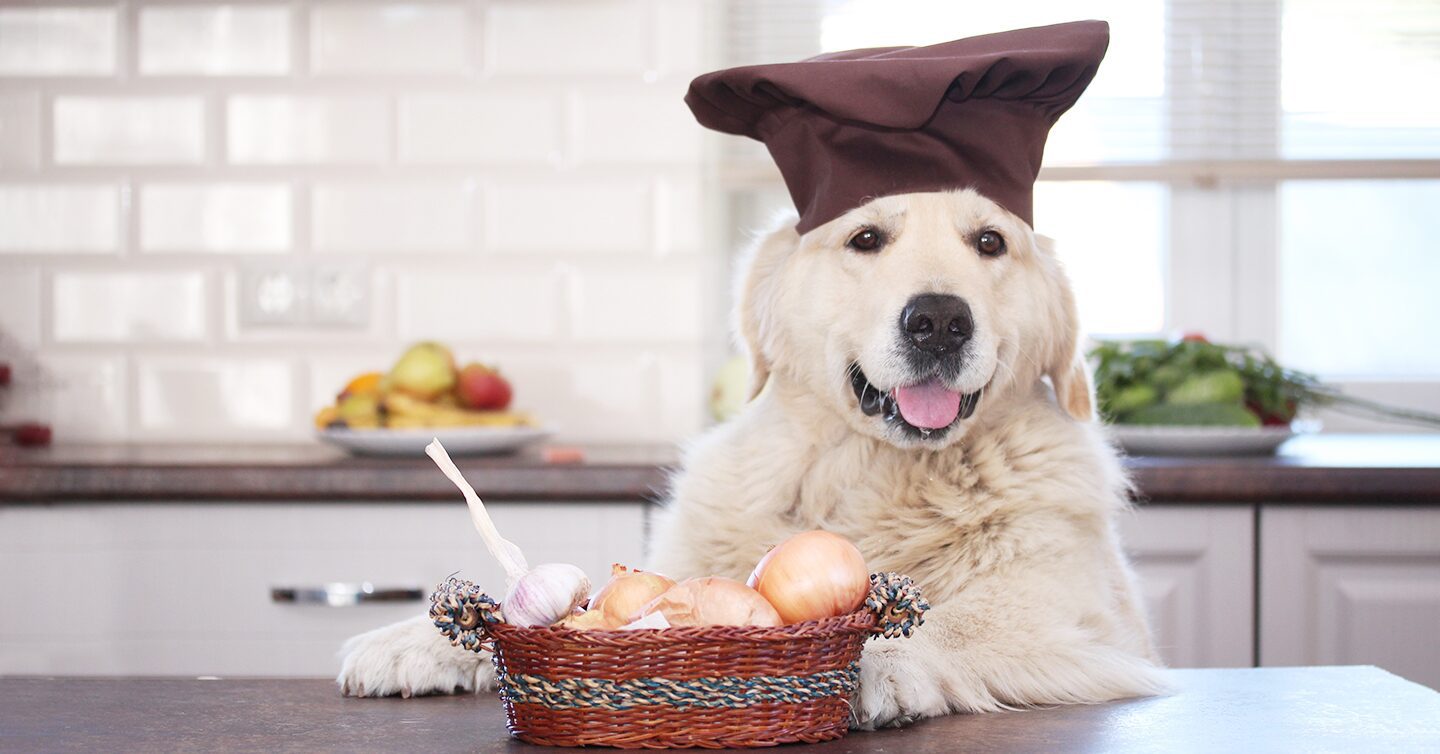Key Points:
- No, dogs cannot eat onions due to their toxicity causing hemolytic anemia.
- Onions, while nutrient-rich for humans, pose serious health risks to dogs.
- It’s not about preference, as onions are harmful irrespective of a dog’s liking.
- Dogs should avoid all forms of onions, including raw, cooked, or powder.
- Even small amounts of onion can be dangerous for dogs.
Onions, garlic, leeks, scallions – we love adding all of these into our culinary masterpieces for their aromatic and flavor-enhancing properties. However, this family of plants is the most toxic for our dogs. Even a small amount can leave our canine companions in perilous conditions and potentially cause death.
Let’s take a deeper look at onions and find out why they’re so dangerous for our dogs.
The Onion
Onions are members of the allium family of root vegetables. Garlic, leeks, scallions (or green onions), shallots, and chives are as well.
All onions – white, yellow, green – can cause onion toxicosis in your dog. Whether they are cooked or raw, all parts of the onion, including the leaves, flesh, skin, and juice, are dangerous for your dog.
The ASPCA notes that dogs of Japanese descent – Akita and Shiba Inu – are most susceptible to onion toxicosis.
Here’s what happens if your dog eats onion
The organic compound in onions causing onion toxicity is called n-propyl disulfide. It damages red blood cells and leads to hemolytic anemia.
Here’s how it happens:
N-propyl disulfide is a sulfur compound found in all parts of plants from the allium family. Dogs don’t have the enzyme capable of digesting it. That’s all fine, and you’d think they would just poop it out right? Nope, this is a toxic little compound as soon as it enters your dog’s body.
This sulfur compound attaches to the dog’s red blood cells, specifically hemoglobin, which is the oxygen carrying protein in blood. When that happens, the red blood cells suffer oxidative damage, making them unable to carry oxygen throughout the body properly. They actually form clumps called heinz bodies, which is the telltale sign on a blood smear (under the microscope, it looks like a purple blob on the red blood cells) for onion poisoning.
Inside your dog’s body, a battle begins. Their bodies look at Heinz bodies as invaders, and fight to destroy them. Keep in mind, these are the red blood cells that are now considered the enemy. This process is called hemolysis, or the destruction of red blood cells.
If left unchecked, the battle rages on. The red blood cells are being destroyed faster than the body can produce them, and those produced have decreased lifespans. Your dog’s body can’t get the amount of oxygen it needs to maintain organ or system functions, and everything quickly snowballs into a severe anemic state.
Symptoms can start quickly, but most commonly appear a few days after ingestion. Symptoms of onion toxicity are:
- Lethargy
- Abdominal pain
- Decreased stamina or even fainting after or during exercise
- Loss of appetite
- Pale gums
- Elevated heart rate or respiratory rates
- Vomiting
- Diarrhea
- Loss of coordination (ataxia)
- Discolored urine
If medical care is delayed, kidney failure or death can occur.
Is there any amount of onions that’s safe for dogs? Short answer: No.
If your dog gets into the onions one day and chows down, it only takes .05% of their body weight in onions to be a toxic amount. For a 45 pound dog, that’s one small onion. Think about what that means for a tiny Yorkie!
The truly frightening fact about Hemolytic Anemia is that it can build up in the blood slowly, over a long period of time.
Imagine if you have egg bites or quiche every morning for breakfast and there are onions or onion powder in them, and you give your dog a small bite every morning. Then for lunch you have a hamburger (the raw or grilled onions leave their juices on the bun and the burge), and your dog steals a bite. For dinner, you have onion rings, or sauteed mushrooms and onions with your steak, and offer a piece of that steak to your dog. The toxicity builds up in his system. Eventually, symptoms of onion toxicosis will develop.
With any amount of onion, and especially with onion powder and garlic powder, which are more potent than the actual onion , time is of the essence when you see symptoms. Also note that garlic powder and garlic are more toxic than onions, so avoid giving any amount to your dog.
Pet Pro Tip: If you have a dog that is prone to ‘snacksidents’ – you should consider getting a dog insurance plan as soon as possible. It can help you afford the best care in the future by covering eligible vet bills for digestive illnesses, toxic ingestion, and more.
How is onion poisoning treated?
If you suspect your dog ate onions, or even a part of one, they need to receive veterinary care immediately! Remember that time is of the essence with the ingestion of onions.
Diagnosis:
The vet will order a urinalysis to check for increased hemoglobin in the urine, and blood work to look for Heinz bodies on the red blood cells. If you have questions, the ASPCA Animal Poison Control Helpline is available 24/7 to assist you.
Treatment:
Vomiting may be induced if onions were ingested recently. There could also be a stomach flush to remove any toxic, undigested portions.
They may administer activated charcoal to absorb toxins in the gut.
IV fluids will flush the bloodstream and maintain hydration.
Severe cases may require supplemental oxygen and blood transfusions.
Prognosis:
Your dog will spend some time at the vet clinic being closely observed until the crisis is over. Most dogs will be just fine after a mild case of onion poisoning, but the more severe cases could cause a long recovery time.
Pet insurance can be helpful during times like these, allowing you to focus on the health of your pup with less worry about the vet costs. Pumpkin understands this, offering “Best In Show” pet insurance to give you peace of mind when your dog needs medical care.
It’s interesting to note that cats are more likely to suffer from onion toxicosis than dogs. There was a spike in toxicity from onions in cats a few years ago. Vets often use baby foods to entice cats, who have gone off food, to eat. They discovered that onion powder was present in the baby food, causing the issue. Thankfully, baby food now no longer contains onion powder.
The bottom line for dogs and onions
Whether your meal contains raw onions, dehydrated onions, onion powder, onion juice, fresh or cooked onions of any type (yellow, green, white, etc.), it is dangerous for your dog to eat any of them. Since it can build up in their blood over time, even a tiny amount, given regularly, is cause for great concern and could spell severe anemia and even death for your beloved canine buddy.
There is no safe amount of onion for your dog, and the size, age, breed, and health determine the toxicity levels. Large dogs may get away with a small amount of onion better than a small dog. But we should NEVER give our dogs onions in any form, including any human food containing onions. It’s that simple—onions, or any member of the allium family, may be okay for us dog parents, but they’re an absolute NO for dogs.
Safe ways to feed your dog pumpkin
Raw pumpkin: When steamed or roasted and cut into small pieces, raw pumpkin can be a great treat for your dog.
Canned: You can find organic canned pumpkin in the supermarket that only contains fresh pumpkin. Not only is this a healthy addition to your pup’s kibble but is also known to help slow or stop diarrhea in dogs.




